A Snapshot of Autism Spectrum Disorder in Missouri
‹View Table of Contents
Download and print this page [PDF – 235 KB, Print Only]
Findings from the Missouri Autism and Developmental Disabilities Monitoring (MO-ADDM) Project help increase understanding about the number of children with autism spectrum disorder (ASD), the characteristics of those children, and the age at which they are first evaluated and diagnosed.

![]() SITE TRACKING AREA
SITE TRACKING AREA
Or 2.5% of 8-year-old children were identified with ASD by the MO-ADDM Project in 2020.
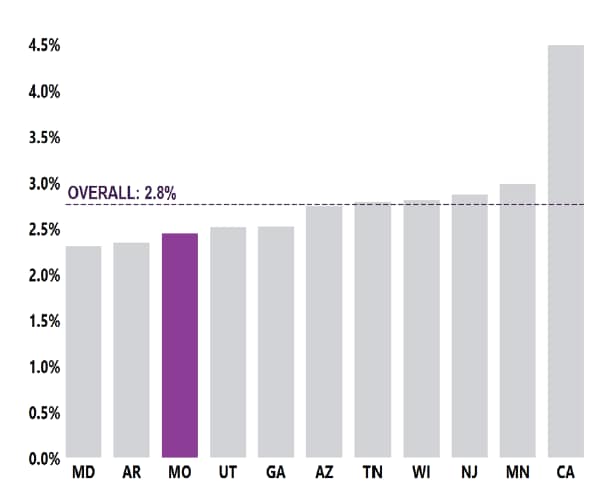
This percentage is lower than the average percentage identified with ASD (2.8%) in all communities in the United States where CDC tracked ASD among 8-year-olds in 2020.
IQ data available for 61%
of children identified with ASD by MO-ADDM
Among 8-year-olds, Black children were 1.2 times as likely and Asian/Pacific Islander (A/PI) children were 1.5 times as likely to be identified with ASD as White children. Children with two or more races were less likely to be identified with ASD compared with all other races except Hispanic children.
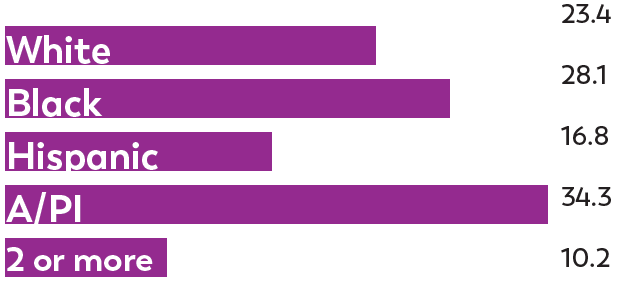
Values indicate prevalence per 1000.
Who met the ADDM case definition had an ASD diagnosis by a health care provider; 54% had autism special education eligibility; and 72% had an ASD International Classification of Disease (ICD) code.
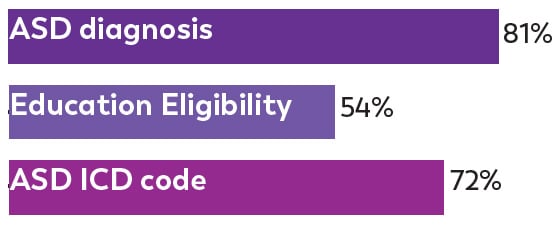
were 2.6x as likely to be identified with ASD than girls.

identified with ASD received a Comprehensive Developmental Evaluation by age 3 years.
Children who were born in 2016 (16%) were almost 1.8 times as likely to receive an ASD diagnosis or ASD special education classification by 48 months of age compared to children born in 2012.
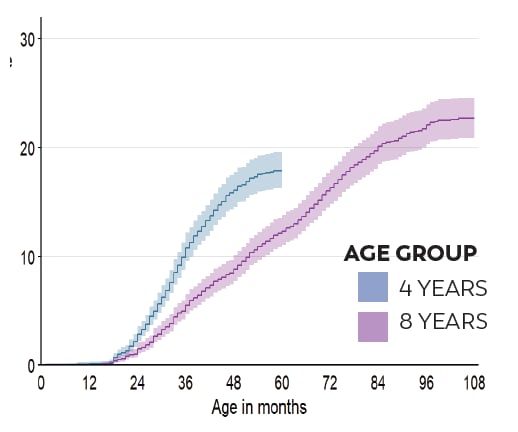
The COVID-19 pandemic disrupted many aspects of life, including the ability to evaluate children for autism. Before the pandemic, 4-year-old children had higher ASD identification than 8-year-old children had when they were aged 4 years. In the first few months of the pandemic, 4-year-old children were less likely to have an evaluation than 8-year-old children had when they were the same age.
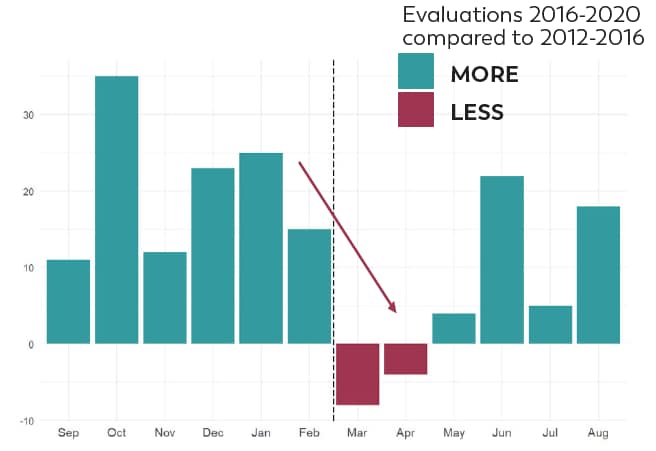
What are the key take-away messages from Missouri ADDM?
- For the first time, ASD prevalence was higher for Black and A/PI children than White children in MO-ADDM.
- Black children continue to be more likely to have ASD and ID compared with children of other races/ethnicities in communities included in the MO-ADDM network.
- A higher percentage of children born in 2016 had evaluations by 36 months of age and a diagnosis or special education eligibility by 48 months of age compared with children born in 2012.
How can this information be useful?
MO-ADDM’s latest findings can be used to
- Plan for ASD services and training.
- Promote early identification and service initiation. Guide future ASD research.
- Inform policies promoting improved health and education outcomes for individuals with ASD.
Partners in Missouri might consider ways to promote early identification by community providers in order to facilitate access to interventions and services that will benefit children and their families.
How and where was this information collected?
MO-ADDM uses a record review method. Specifically, this information is based on the analysis of data collected from the health and special education records of children who were 4-years-old and 8-years-old and living in one of five counties in Missouri in 2018.
Tracking areas: Franklin, Jefferson, St. Charles, St. Louis counties and the City of St. Louis
8-year-old children in tracking area: 24,561
- 63% White
- 24% Black
- 5% Hispanic
- 3% Asian or Pacific Islander
- <1% American Indian or Alaska Native
- 5% Multiracial
4-year-old children in tracking area: 24,476
- 63% White
- 24% Black
- 5% Hispanic
- 4% Asian or Pacific Islander
- <1% American Indian or Alaska Native
- 5% Multiracial
What else does MO-ADDM do besides provide estimates of ASD?
MO-ADDM investigators at Washington University in St. Louis collaborate with the Missouri Department of Health and Senior Services and community partners to track the number and characteristics of 8-year-olds and 4-year-olds with ASD. In addition, MO-ADDM conducts various ASD-related public health, research, and clinical activities to inform several types of partners (such as clinicians, educators, and families) on the latest scientific developments, best practices for early intervention, and clinical care for children with ASD.
“The Missouri ADDM ASD surveillance data, with its combination of health and educational data sources, provides a more comprehensive picture of where and when children with ASD are being identified in our region than we would otherwise have. As a diagnostic center, these data can help us to advocate for targeted community resources for our patients to better serve them in a more timely and economical way.”
– MICHAEL S. BUNIS, Psy.D.
Clinical Director of Washington University MO State Autism Center
Assistant Professor, Department of Psychiatry, Washington University School of Medicine
Resources
RESOURCES TO CONNECT FAMILIES TO SERVICES AND SUPPORT IN MISSOURI
DEPARTMENT OF ELEMENTARY AND SECONDARY EDUCATION’S OFFICE OF SPECIAL EDUCATION
dese.mo.gov/special-education
573-751-5739
DEPARTMENT OF MENTAL HEALTH’S DIVISION OF DEVELOPMENTAL DISABILITIES
dmh.mo.gov/dd/
FIRST STEPS
www.mofirststeps.com/
1-866-583-2392
NAVIGATING AUTISM SERVICES
https://dmh.mo.gov/media/pdf/navigating-autism-services-community-guide-missouri
CDC’S LEARN THE SIGNS.
ACT EARLY.
ALICIA CURRAN
Missouri’s Act Early Ambassador
https://www.cdc.gov/ncbddd/actearly/ambassadors-list.html
CONNECT WITH MO-ADDM
Robert Fitzgerald, PhD, MPH
Washington University in St. Louis 314-286-0151
fitzgeraldr@wustl.edu
Pages in this Report
- 2023 Community Report on Autism
- Executive Summary
- Key Findings from the ADDM Network
- A Deeper Dive
- Spotlight On: Progress in Early Identification Disrupted during the COVID-19 Pandemic
- Spotlight On: A New Pattern in Racial and Ethnic Differences
- Data for Action
- ADDM Network Site Snapshots Overview
- A Snapshot of Autism Spectrum Disorder in Arizona
- A Snapshot of Autism Spectrum Disorder in Arkansas
- A Snapshot of Autism Spectrum Disorder in California
- A Snapshot of Autism Spectrum Disorder in Georgia
- A Snapshot of Autism Spectrum Disorder in Maryland
- A Snapshot of Autism Spectrum Disorder in Minnesota
- ›A Snapshot of Autism Spectrum Disorder in Missouri
- A Snapshot of Autism Spectrum Disorder in New Jersey
- A Snapshot of Autism Spectrum Disorder in Tennessee
- A Snapshot of Autism Spectrum Disorder in Utah
- A Snapshot of Autism Spectrum Disorder in Wisconsin
- Glossary
- References